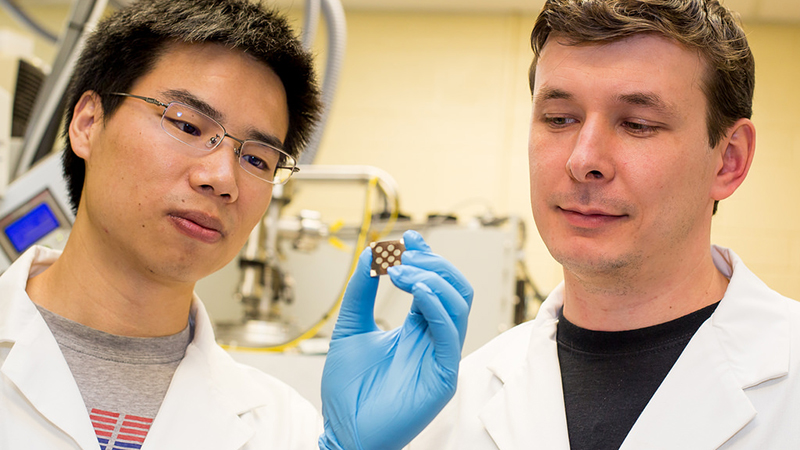
June 9, 2014
Think those flat, glassy solar panels on your neighbour’s roof are the pinnacle of solar technology? Think again.
Researchers in the University of Toronto’s Edward S. Rogers Sr. Department of Electrical & Computer Engineering have designed and tested a new class of solar-sensitive nanoparticle that outshines the current state of the art employing this new class of technology.
This new form of solid, stable light-sensitive nanoparticles, called colloidal quantum dots, could lead to cheaper and more flexible solar cells, as well as better gas sensors, infrared lasers, infrared light emitting diodes and more. The work, led by post-doctoral researcher Zhijun Ning and Professor Ted Sargent, was published this week in Nature Materials.
Collecting sunlight using these tiny colloidal quantum dots depends on two types of semiconductors: n-type, which are rich in electrons; and p-type, which are poor in electrons. The problem? When exposed to the air, n-type materials bind to oxygen atoms, give up their electrons, and turn into p-type. Ning and colleagues modelled and demonstrated a new colloidal quantum dot n-type material that does not bind oxygen when exposed to air.
Maintaining stable n- and p-type layers simultaneously not only boosts the efficiency of light absorption, it opens up a world of new optoelectronic devices that capitalize on the best properties of both light and electricity. For you and me, this means more sophisticated weather satellites, remote controllers, satellite communication, or pollution detectors.
“This is a material innovation, that’s the first part, and with this new material we can build new device structures,” said Ning. “Iodide is almost a perfect ligand for these quantum solar cells with both high efficiency and air stability—no one has shown that before.”
Ning’s new hybrid n- and p-type material achieved solar power conversion efficiency up to eight per cent—among the best results reported to date.
But improved performance is just a start for this new quantum-dot-based solar cell architecture. The powerful little dots could be mixed into inks and painted or printed onto thin, flexible surfaces, such as roofing shingles, dramatically lowering the cost and accessibility of solar power for millions of people.
“The field of colloidal quantum dot photovoltaics requires continued improvement in absolute performance, or power conversion efficiency,” said Sargent. “The field has moved fast, and keeps moving fast, but we need to work toward bringing performance to commercially compelling levels.”
This research was conducted in collaboration with Dalhousie University, King Abdullah University of Science and Technology and Huazhong University of Science and Technology.
More information:
Marit Mitchell
Senior Communications Officer
The Edward S. Rogers Sr. Department of Electrical & Computer Engineering
416-978-7997; marit.mitchell@utoronto.ca